What's New
Displaying results 2091 - 2100 of 4052

Resource | Fact Sheets,
Background about HTC in Nepal:
- HIV Testing and Counseling service was first started in Nepal in 1995.
- HIV Testing and Counseling is the entry point for overall HIV care services. It is provided free of cost to the key populations at higher risk and general population all over the country.
- Nepal’s HIV testing and counseling services have been guided by the National Guidelines for Testing.
- National Consolidated Guidelines for Treating and Preventing HIV in Nepal has recommended various approaches for both facility-based and community-based testing in order to maximize HIV testing.
- There are over 235 service sites providing HIV testing and counseling, including 130 government sites as of July 2016.
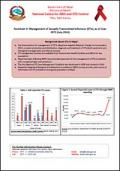
Resource | Fact Sheets,
Background about STIs in Nepal:
- Key interventions for management of STI in Nepal are targeted Behavior Change Communication (BCC), condom promotion and distribution, diagnosis and treatment of STIs (both syndromic and etiological management) and referral services.
- STI management services are available from Government Health Facilities and NGOs for key population.
- Nepal has been following WHO recommended approach for the management of STIs in patients with recognized signs and symptoms.
- The first National STI Case Management Guideline was developed in 1995 and revised in 2014.
- Repeated Integrated Biological and Behavioral Surveillance (IBBS) Surveys are the main source of information for STI prevalence among key population in Nepal.
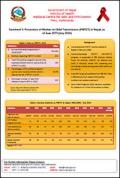
Resource | Fact Sheets,
Background:
- Comprehensive PMTCT service started in Nepal in February 2005.
- Community-based PMTCT (CB-PMTCT) program is expanded in 55 districts (Global Fund: 32 districts, UNICEF: 14 districts and GoN: 9 districts) where HIV screening and counseling is done among every ANC visitors at the district.
- Free ARV drugs are available from 65 ART sites in 59 districts from where HIV-positive mothers can receive treatment.
- Early Infant Diagnosis (EID) service is available for babies born to the HIV-positive mothers.
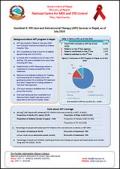
Resource | Fact Sheets,
Background about ART program in Nepal:
- ART was started in Nepal in February 2004 from Sukraraj Tropical and infectious Disease Hospital, Teku.
- ART is available for free of cost for all eligible people living with HIV (PLHIV).
- Currently ART is available from 65 sites in 59 districts. HIV care is available from many sites including ART sites.
- Establishment of ART dispensing centers is underway to increase accessibility of the treatment.
- National Consolidated Guideline for Treating and Preventing HIV in Nepal 2014 is the guiding document for providing HIV treatment and care in Nepal and it is being updated in Test and Treat approach.
- CD4 count service is available from 27 sites across the country.
- Viral load testing service is available from National Public Health Laboratory and is expanded to Seti Zonal Hospital, Kailali.
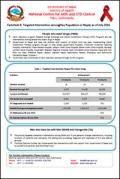
Resource | Fact Sheets,
People who Inject Drugs (PWID)
- Harm reduction program (Needle Syringe Exchange and Opioid Substitution Therapy (OST) Program) are key interventions among people who inject drugs in Nepal.
- Government of Nepal and Save the children with support of Global Fund has been implementing Opoid Substitution Therapy program through 11 sites (Seven government hospitals :Tribhuvan University Teaching Hospital, Kathmandu: Patan Mental Hospital, Lalitpur: Bheri Zonal Hospital, Banke: Koshi Zonal Hospital, Morang: Lumbini Zonal Hospital, Rupandehi: Western Regional Hospital, Kaski and Mechi Zonal Hospital, Jhapa and Four NGO run sites: SPARSHA Nepal, Lalitpur: Saarathi Nepal, Kathmandu: Aavash, Bhaktapur and Richmound Fellowship Nepal, Chitwan ).
- Youth Vision also contributes in harm reduction services through its OST program.
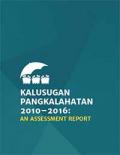
Resource | Publications,
The Aquino Health Agenda (AHA) is achieving Universal Health Care for All Filipinos, or Kalusugan Pangkalahatan (KP). Implemented from 2010-2016, the AHA has three main goals: 1. Sustained health financing; 2. Responsive health system; and 3. Better health outcomes. To achieve these goals, KP focused on addressing inequities in health, particularly by ensuring that those who belong in the lowest income quintiles have access to quality health care.
Within the six years of Kalusugan Pangkalahatan, the health budget has increased by more than fivefold, largely contributed by the Sin Tax Law. Likewise, the budget subsidies for Philhealth premium payment for the poor increased from 3.0B in 2011 to 43B in 2016, resulting to 100% coverage for indigents, based on the DSWD Listahanan, in 2015.
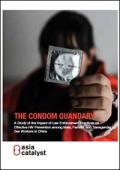
Resource | Publications,
The Asia Catalyst report, The Condom Quandary: A Survey of the Impact of Law Enforcement Practices on Effective HIV Prevention among Male, Female, and Transgender Sex Workers in China, documents how relevant laws and law enforcement practices in China are affecting the ability of sex workers to access and carry condoms, as well as access to HIV and Sexual and Reproductive Health services. The research, conducted among 517 male, female, and transgender sex workers in three major Chinese cities, provides unprecedented statistical data and testimonies for this long-discussed issue in China.
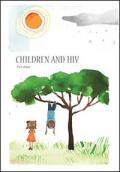
Resource | Fact Sheets,
Despite continuing progress in stopping new HIV infections among children there are still major challenges in ensuring access to effective antiretroviral therapy for children living with HIV. The challenges start with diagnosing HIV among children.
Four hundred children become infected with HIV every day; however, In 2015, only 54% of children exposed to HIV in the 21 highest-burden countries were tested for the virus within the recommended two months. This is largely because it requires complex laboratory technology that is often only available at central laboratories.
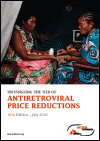
Resource | Publications,
In 2000, when the International AIDS Conference was last held in Durban, South Africa, a basic antiretroviral (ARV) regimen cost over US$10,000 per person per year (PPPY), multilateral programmes funding the fight against HIV, TB, and malaria did not exist, and many donors – such as the US government – had yet to provide a single dollar for antiretroviral treatment in resource-limited countries.
In this report, we provide an update on the key facets of HIV treatment access. It includes the latest HIV treatment guidelines from World Health Organization (WHO), an overview on pricing for first-line, second-line and salvage regimens, and a summary of the opportunities for – and threats to – expanding access to affordable antiretroviral therapy (ART).
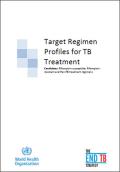
Resource | Publications,
There is an urgent need for safer, simpler, more efficacious and accessible treatment regimens for all forms of TB. The development of Target Product Profiles for TB drug regimens (hereafter referred as Target Regimen Profiles- TRPs) intends to assist drug regimen developers towards important features and align these with patient and programmatic needs at country level. The proposed TRPs, which are based on prioritized characteristics, encompass the needs of end-users, care providers and policy-makers to have shorter, less toxic, and operationally feasible regimens.
The novelty of the TRP approach is to have the goal of a treatment regimen in mind very early in the process of drug development. Based on the idea that TB drug research and development (R&D) is moving towards developing and testing TB regimens rather than individual drugs, a set of targets is needed based on prioritized characteristics and representing the needs of end users. Aimed at the pharmaceutical industry, research institutions, product development partnerships, donors, non-governmental organizations (NGOs) and civil society organizations (CSOs), TRPs align targets and specifications for developers with the view of achieving shorter, less toxic, operationally feasible and cheaper regimens.





